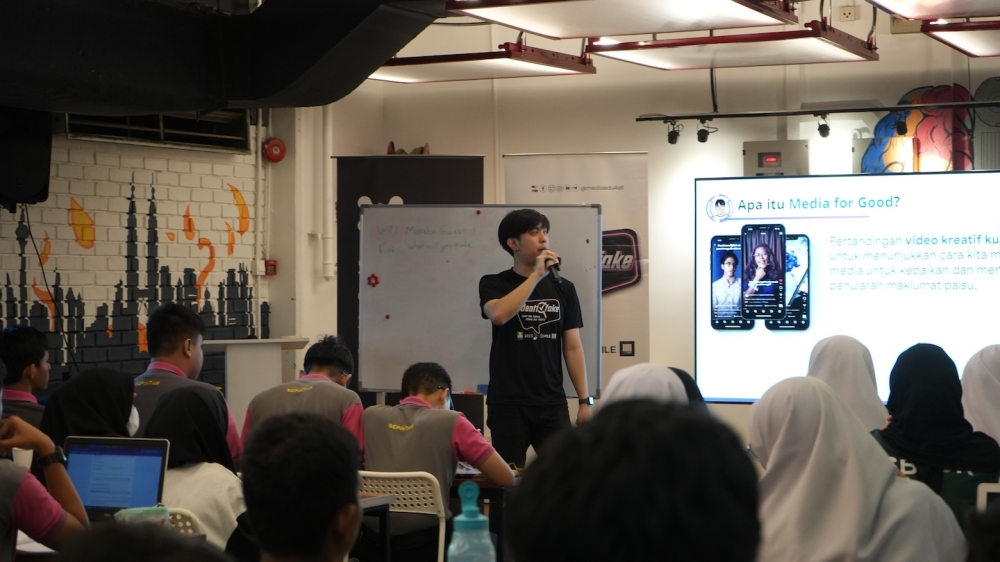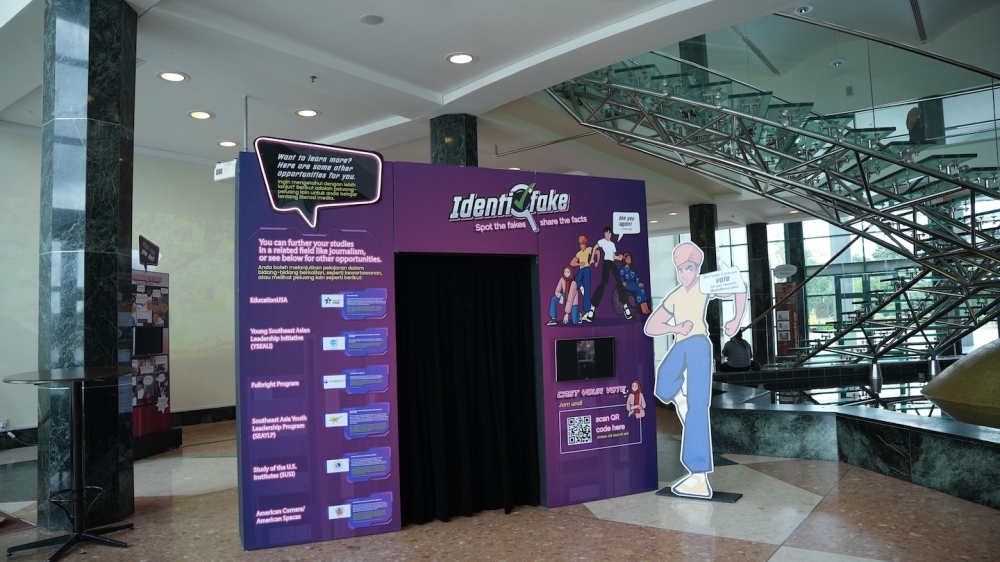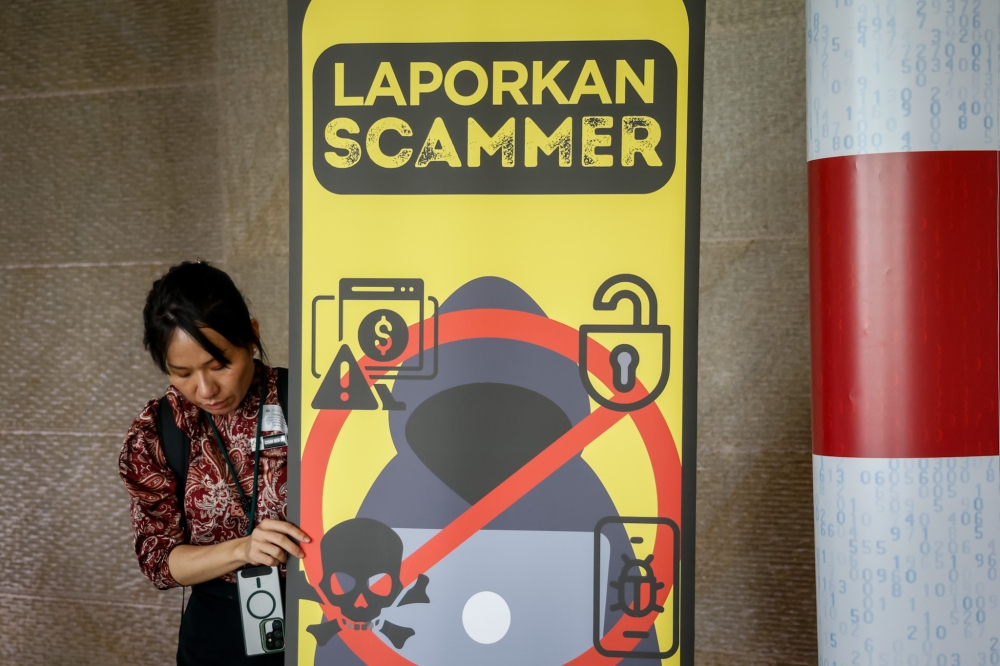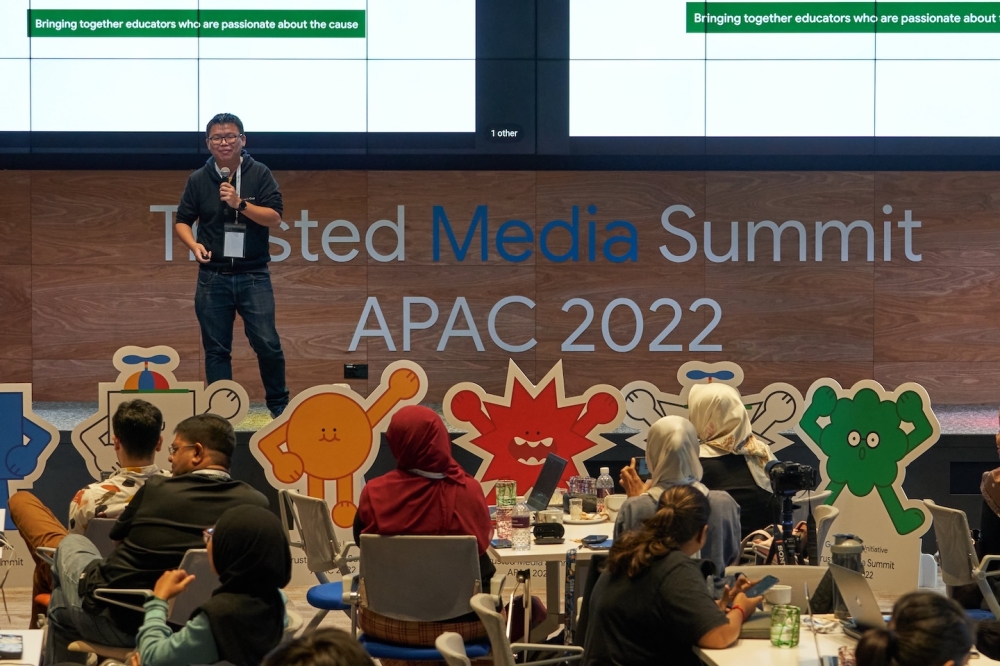KUALA LUMPUR, Aug 5 — Misinformation has become a growing threat across societies, and the rise of deepfake technology has made it even harder to tell what is real and what is fake.
From fake news to AI-generated scams that mimic familiar voices or faces, false content is now more convincing and more dangerous.
While these tools have evolved, the public’s ability to detect manipulation has not kept pace.
This is where media literacy becomes essential.
“People often think media literacy is just about spotting fake news, but it goes much deeper than that. It’s about understanding how messages are made, why they are made, and how they can shape what we think or believe,” said David Chak, co-founder and director of Arus Academy, who leads the Media Education for All programme.
According to Chak, teaching media literacy starts with three basic questions:
- What is the message?
- How is it being framed?
- And why does it exist?
He said that understanding the motive behind a message is crucial, especially in emotionally charged situations.
“We encourage people to look at the content, the language, and the intention behind any message. Sometimes, misinformation is shared with good intentions, like the belief that drinking hot water can prevent Covid-19. But disinformation is different. It’s created to deceive, and that intention makes it far more harmful,” he said.
Citing the growing trend of AI being used to mimic real voices, Chak said several scam cases in Malaysia have involved victims receiving phone calls that sound exactly like a friend, parent, or employer, often asking for urgent help involving money.
He explained that scammers often collect voice samples from WhatsApp voice notes, Instagram stories, or public videos to recreate someone’s voice.
Once they have enough data, the tools to generate convincing audio are widely available and inexpensive.
“Imagine getting a call from someone who sounds just like your mum, saying she’s in trouble and needs money fast. She’s fine but the voice is convincing because it was cloned using AI.
“That’s why we tell people not to trust the voice alone. If something feels off, verify it using a method you trust. Call back through a saved number or use a video call,” he said.

Scam calls can now even use generative AI to mimic someone you know. — Picture by Firdaus Latif
Scams work because they push panic
Scams succeed by creating emotional pressure. Chak said AI-generated content is designed to stir panic, urgency, or hope and that’s what scammers count on.
Whether it’s a fake romance, an unbelievable prize, or a voice call from a loved one in distress, he said the goal is the same, which is to trigger a reaction before the brain can assess what’s happening.
“If something makes you panic, that’s a red flag. Media literacy teaches people to pause, breathe, and ask: Does this make sense? Would this person really say this? Is this typical behaviour?” he said.
He added that warning signs include strange language, sudden contact through unfamiliar platforms, or a tone that doesn’t match the person it’s meant to come from.

Younger people are more digitally fluent due to their reliance on social media whereas older adults remain vulnerable due to limited awareness of how technology can be used to deceive. — Picture courtesy of Arus Academy
Teaching students to use, not fear, AI
Chak believes schools must prepare students for the digital world they are already navigating and that includes understanding AI and its ethical use.
He said educators should not avoid these tools but teach how they work and how they can be misused.
“We shouldn’t be banning ChatGPT or AI technologies. Instead, we should be teaching students how to use them responsibly. Media literacy includes ethics. If we want students to think critically, we have to show them how these tools work and how they can be misused.
“If we tell students not to copy, but teachers use AI-generated materials without being transparent about it, it sends the wrong message,” he said.
He also called for more emphasis on ethics in digital education, including values like empathy, responsibility, and integrity.

Chak highlighted the rising use of AI to clone real voices, noting that in several Malaysian scam cases, victims received calls that sounded just like someone they knew. — Picture courtesy of Arus Academy
Protecting those most at risk
While younger Malaysians tend to adapt quickly to new tech, Chak said the older generation are often the most vulnerable to scams.
He added that the younger generation has a role to play in protecting their families.
“A lot of scams target the elderly, especially those unfamiliar with new apps or digital trends. That’s why we still need to use TV, radio, and newspapers but with updated messaging that feels relatable.
“When students learn something in school, they should bring it home and explain it to their parents or grandparents. That ripple effect is powerful,” he said.
To protect against AI voice-cloning scams, he suggested families establish “safe words”, simple phrases known only to close relatives that can help confirm identity during suspicious situations.

Besides scams, deepfakes and AI-generated misinformation can also divide society or influence public opinion. — Picture by Firdaus Latif
The deeper risk beyond money
While scams can cause serious financial damage, Chak warned that the greater threat lies in how deepfakes and AI-generated misinformation could divide society or influence public opinion.
“Imagine a deepfake video showing someone disrespecting a mosque. Even if it’s fake, the emotional impact could be immediate and serious.
“People tend to believe first and ask questions later. If trust in the media and institutions breaks down, it’s very hard to recover,” he said.
He also explained that younger Malaysians, despite being more digitally fluent, are more easily influenced due to their heavy reliance on social media for information.
Meanwhile, he said older adults remain vulnerable in different ways, often unaware of how these technologies can be used in scams.
“Young people are not watching Public Service Announcements on TV anymore. They are on TikTok, YouTube, and Instagram. That’s where education needs to happen,” he said.







